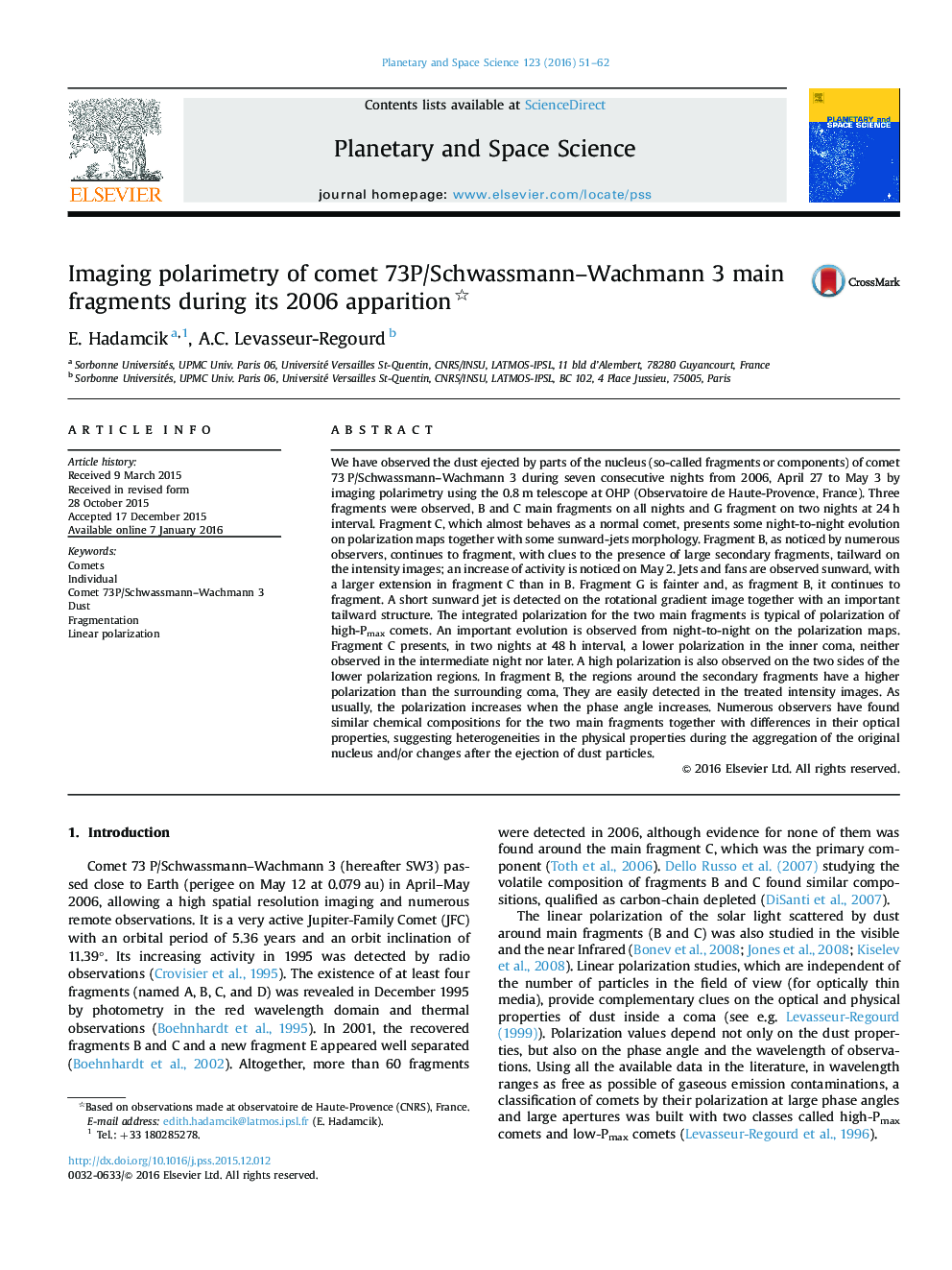| Article ID | Journal | Published Year | Pages | File Type |
|---|---|---|---|---|
| 1780838 | Planetary and Space Science | 2016 | 12 Pages |
Abstract
We have observed the dust ejected by parts of the nucleus (so-called fragments or components) of comet 73Â P/Schwassmann-Wachmann 3 during seven consecutive nights from 2006, April 27 to May 3 by imaging polarimetry using the 0.8Â m telescope at OHP (Observatoire de Haute-Provence, France). Three fragments were observed, B and C main fragments on all nights and G fragment on two nights at 24Â h interval. Fragment C, which almost behaves as a normal comet, presents some night-to-night evolution on polarization maps together with some sunward-jets morphology. Fragment B, as noticed by numerous observers, continues to fragment, with clues to the presence of large secondary fragments, tailward on the intensity images; an increase of activity is noticed on May 2. Jets and fans are observed sunward, with a larger extension in fragment C than in B. Fragment G is fainter and, as fragment B, it continues to fragment. A short sunward jet is detected on the rotational gradient image together with an important tailward structure. The integrated polarization for the two main fragments is typical of polarization of high-Pmax comets. An important evolution is observed from night-to-night on the polarization maps. Fragment C presents, in two nights at 48Â h interval, a lower polarization in the inner coma, neither observed in the intermediate night nor later. A high polarization is also observed on the two sides of the lower polarization regions. In fragment B, the regions around the secondary fragments have a higher polarization than the surrounding coma, They are easily detected in the treated intensity images. As usually, the polarization increases when the phase angle increases. Numerous observers have found similar chemical compositions for the two main fragments together with differences in their optical properties, suggesting heterogeneities in the physical properties during the aggregation of the original nucleus and/or changes after the ejection of dust particles.
Related Topics
Physical Sciences and Engineering
Earth and Planetary Sciences
Geophysics
Authors
E. Hadamcik, A.C. Levasseur-Regourd,
